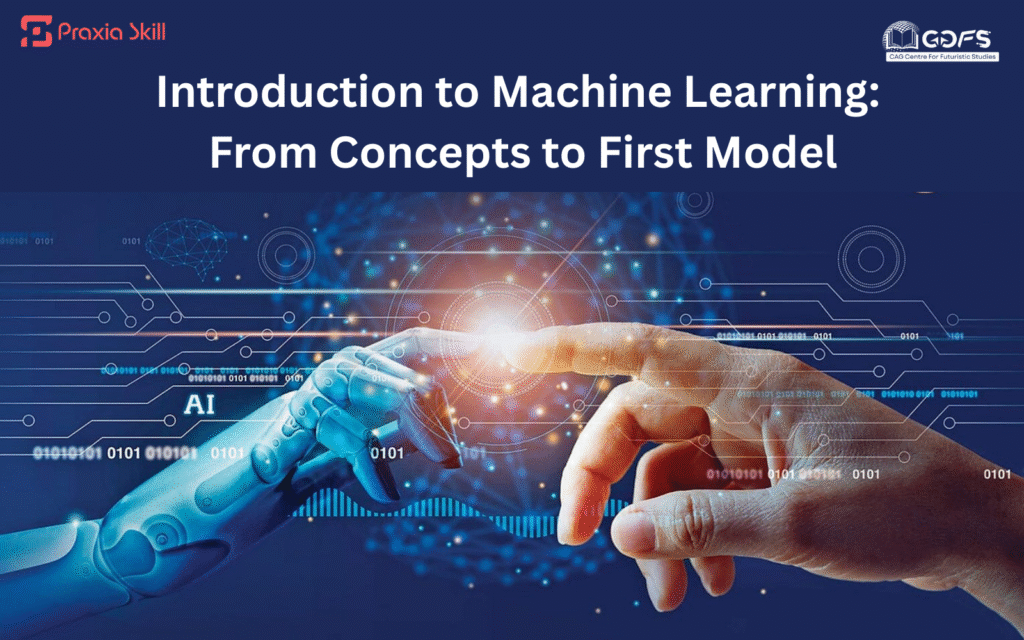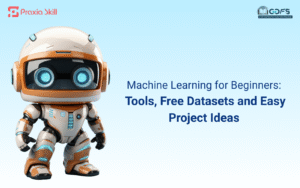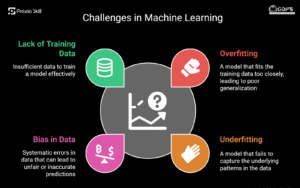Technology has changed the way we live, work, and even shop online. Behind many of these changes lies one powerful idea—Machine Learning (ML). From the spam filter in your email inbox to Netflix recommending your next movie, machine learning quietly shapes our daily lives.
But what exactly is it? In simple terms, Machine Learning is about teaching computers to learn from data, rather than programming them step by step. Instead of telling a system every rule, we feed it examples, and it figures out patterns on its own.
If you’ve been curious about how machine learning works, this beginner’s guide will walk you through the basics of ML, covering key concepts like supervised vs. unsupervised learning, classification vs. regression, training and testing in ML, and even how you could imagine building your first machine learning model.
Supervised vs. Unsupervised Learning
When people first learn about machine learning basics, one of the main questions is: how do machines “learn”?
The answer depends on the type of learning: supervised or unsupervised.
- Supervised Learning: Think of it like a teacher guiding a student. The model is given both the input (data) and the correct answer (label). Over time, it learns to predict the answer for new inputs.
- Example: Spam filters in Gmail. The system is trained on emails already labelled as “spam” or “not spam” and learns to sort new emails correctly.
- Unsupervised Learning: Here, there’s no teacher. The model only gets the input data without any labels. It tries to find patterns and groupings on its own.
- Example: E-commerce websites grouping customers based on shopping behaviour. No one tells the system who the “bargain hunters” or “premium buyers” are—it figures that out by itself.
Classification vs. Regression
Once we know whether we’re dealing with supervised or unsupervised learning, the next big question is: what type of prediction are we making?
- Classification: When the output is a category.
- Example: Predicting whether an email is spam or not spam, or whether a loan application should be “approved” or “rejected.”
- In short, classification is about sorting things into boxes.
- Regression: When the output is a number or value.
- Example: Predicting the price of a house based on its size and location or forecasting tomorrow’s temperature.
- Regression is about answering “how much” or “how many.”
So, when you hear classification vs regression, remember one predicts categories, the other predicts continuous values.
Training and Testing in ML
Learning doesn’t happen overnight, and the same goes for machines. To build a reliable model, we don’t just give it all the data at once. Instead, we split the dataset into two parts:
- Training Data: The part used to teach the model. It’s like giving practice questions before an exam.
- Testing Data: The part used to check how well the model learned. Think of it as the final test—did the system really understand the concepts, or did it just memorize the answers?
This process of training and testing in ML ensures that the model isn’t just good with old data, but can also handle new, unseen situations.
Your First Machine Learning Model
Now, let’s imagine building your first machine learning model. Don’t worry—you don’t need to be a coding expert to understand the process.
- Collect Data: For example, if you want to predict exam results, gather past scores, study hours, and attendance records.
- Choose the Type of Problem: Is it classification (pass/fail) or regression (exact score prediction)?
- Train the Model: Feed the training data to the ML algorithm.
- Test the Model: See how well it predicts outcomes for new data.
- Improve: Adjust and refine the model for better accuracy.
That’s it—you’ve just walked through the beginner’s guide to ML model building. It’s all about learning patterns from data and applying them to make predictions.
Why Machine Learning Matters
Machine learning isn’t just a buzzword. It powers real-world applications that we use daily:
- Fraud detection in banking.
- Virtual assistants like Siri and Alexa.
- Self-driving cars.
- Personalized recommendations on YouTube and Spotify.
As industries continue to adopt ML, the demand for people who understand its concepts and applications is skyrocketing. Learning these basics today is like preparing for the jobs of tomorrow.
Conclusion
Machine Learning may sound complex, but at its heart, it’s about teaching systems to learn from data and make decisions. By understanding the fundamentals—supervised vs unsupervised learning, classification vs regression, training and testing in ML, and the process of building a first machine learning model—you’re already on the right path.
The key is to start simple, practice step by step, and stay curious. Machine Learning is shaping the future, and with the right skills, you can be part of that future too.



